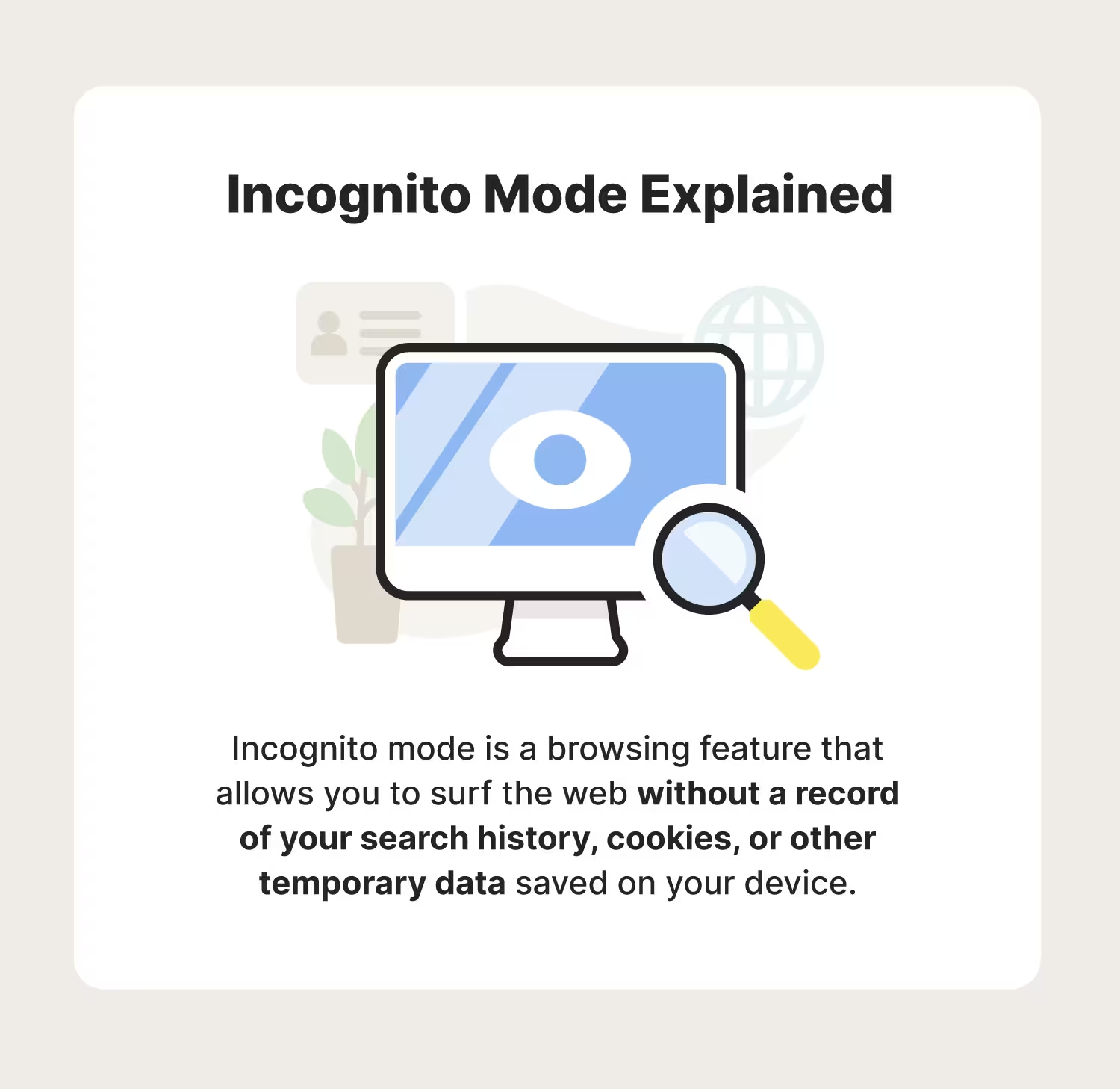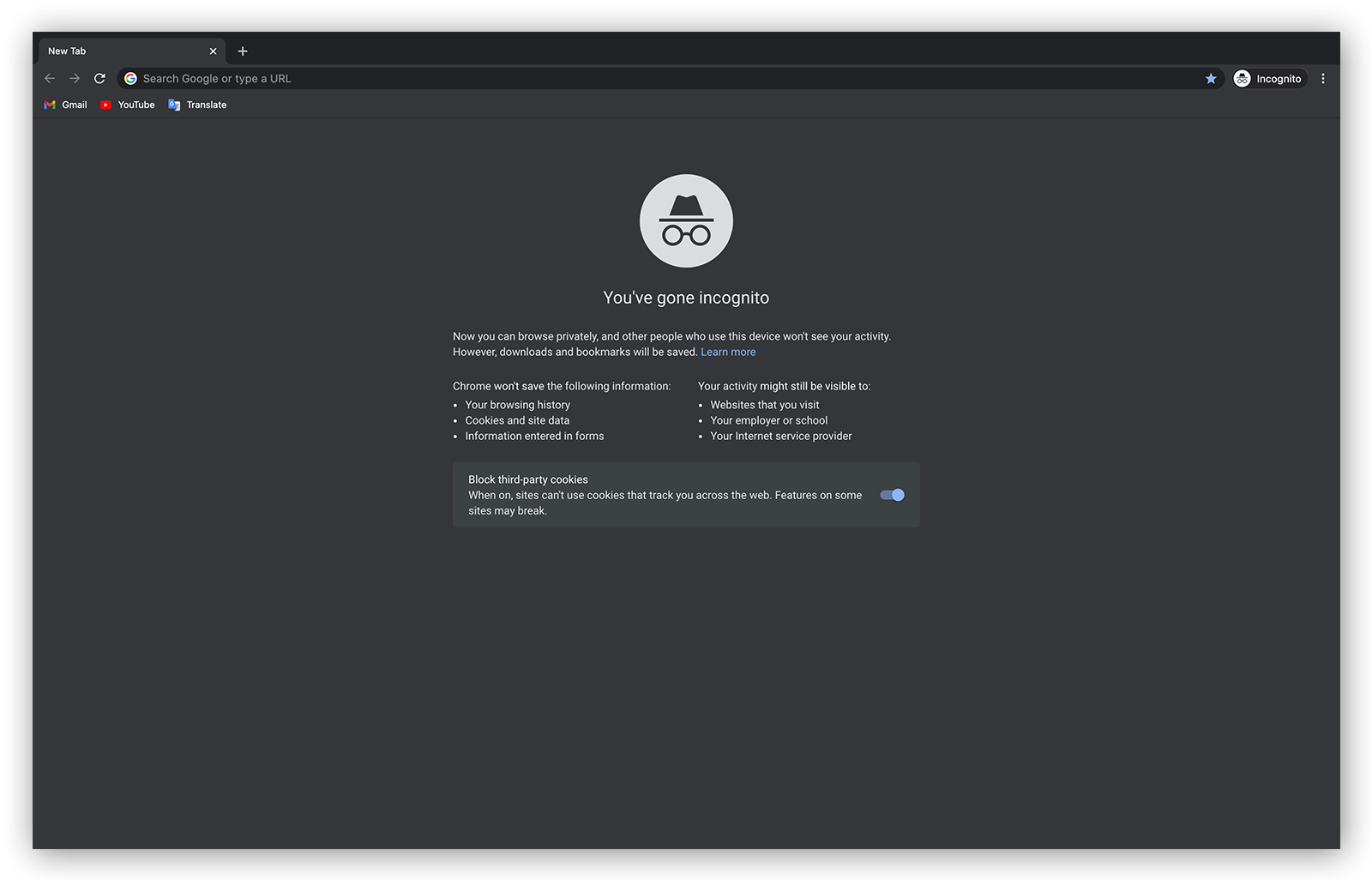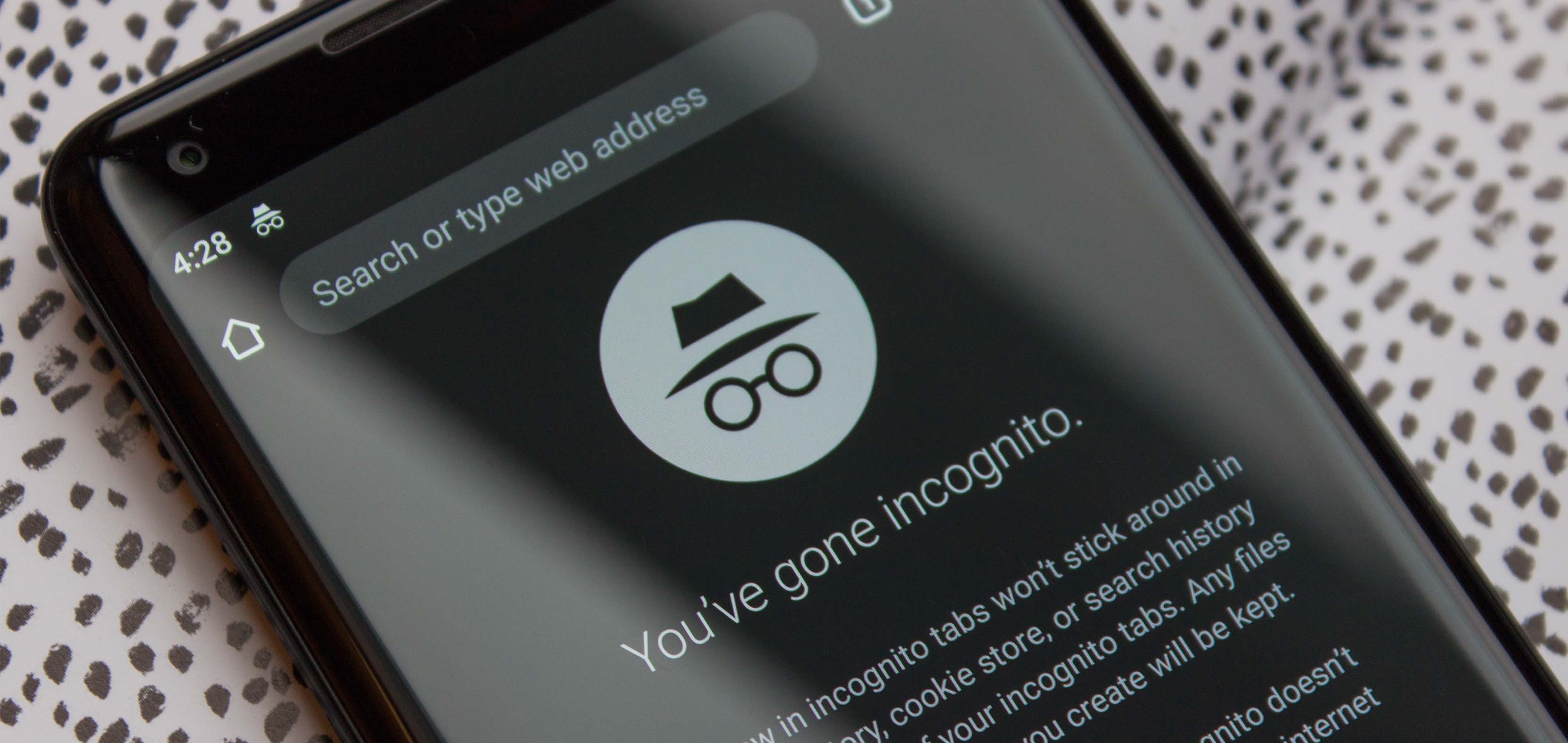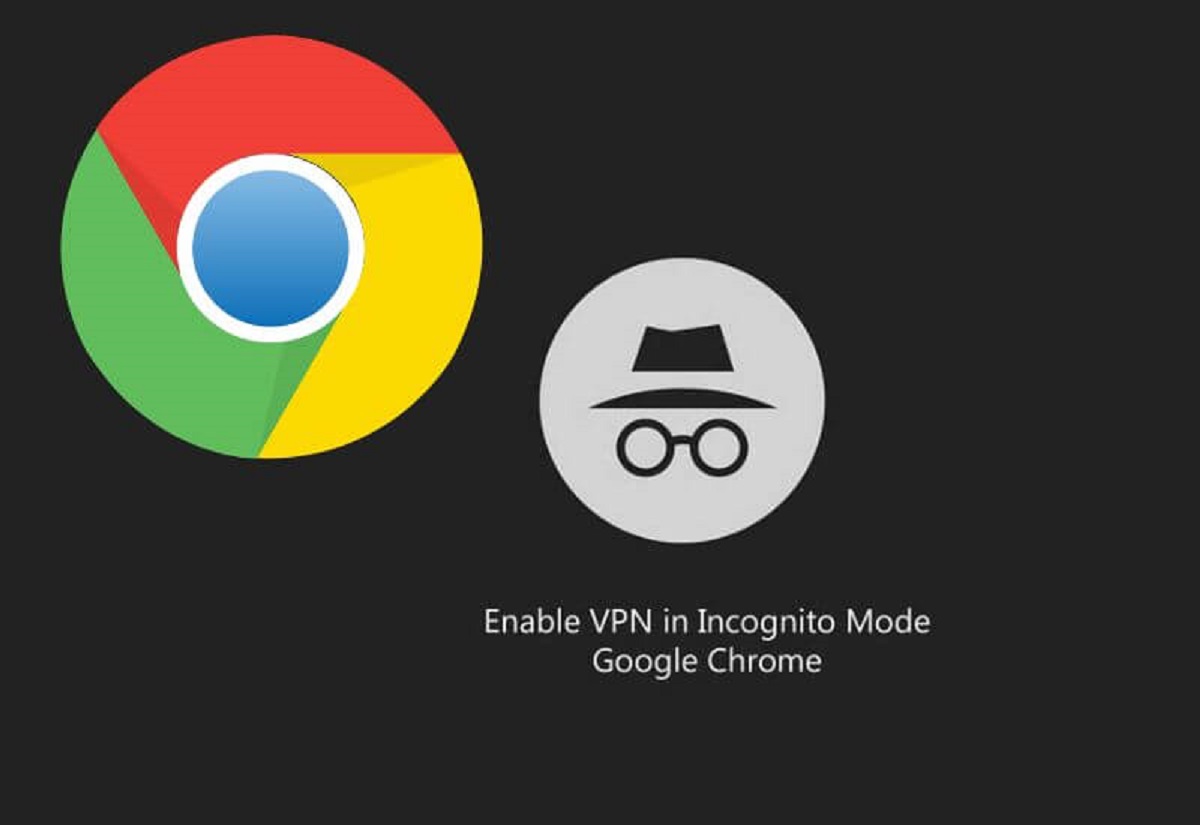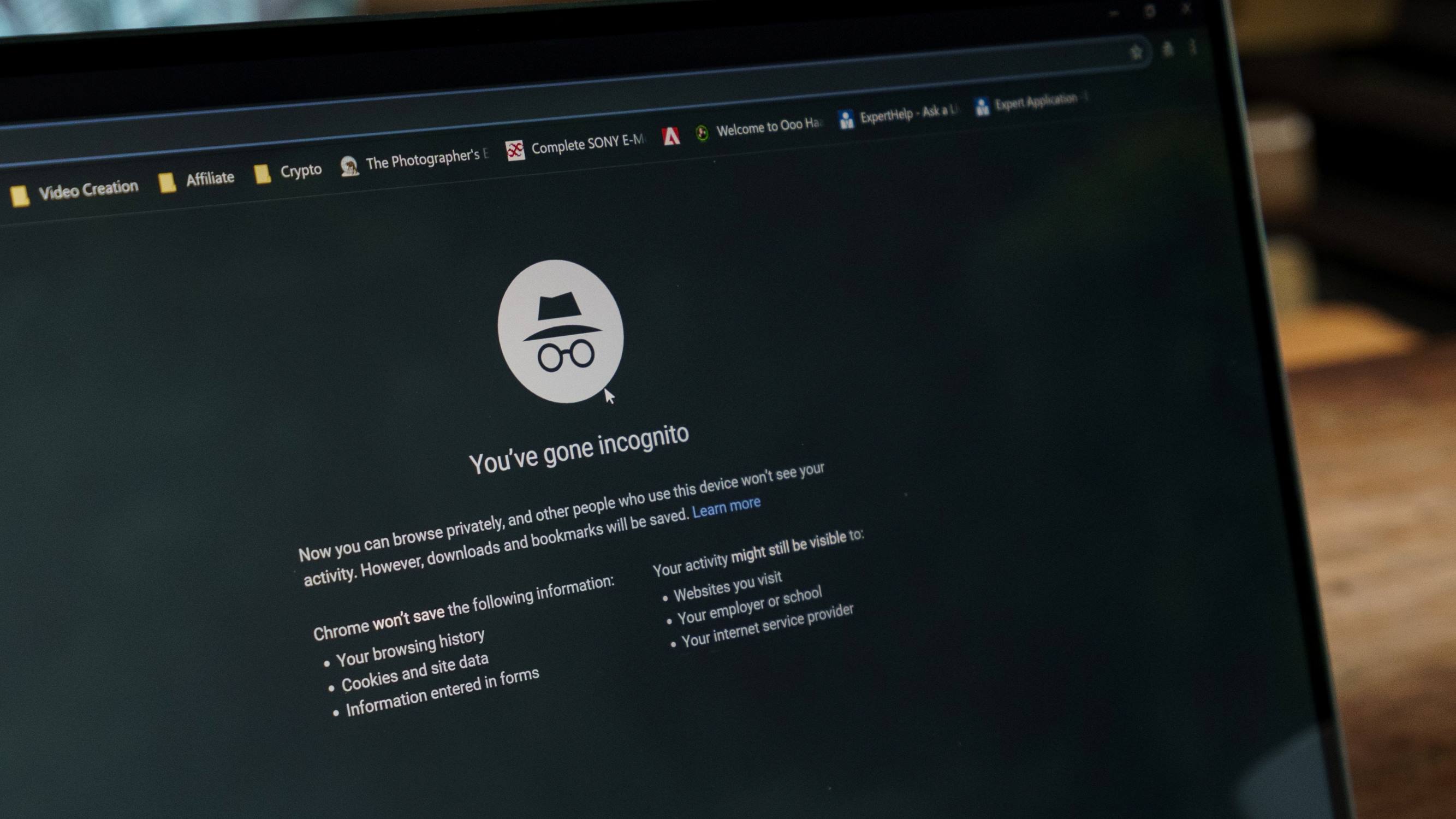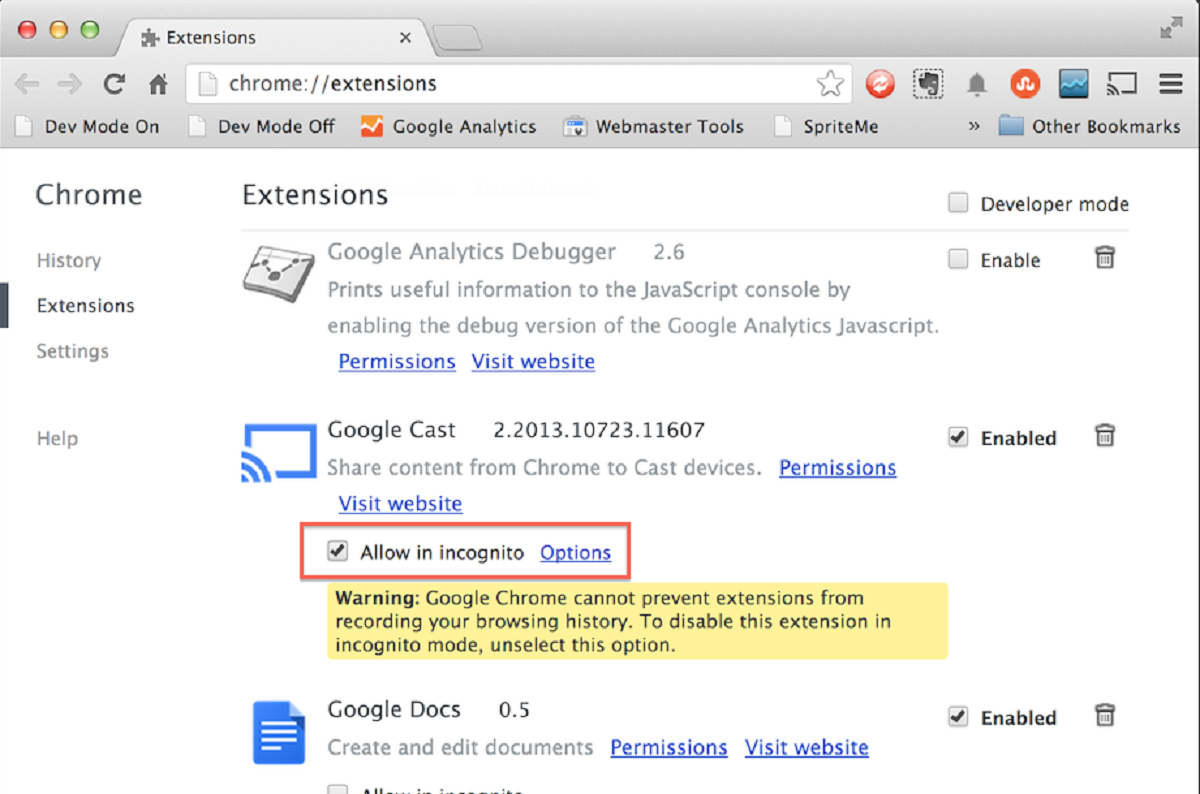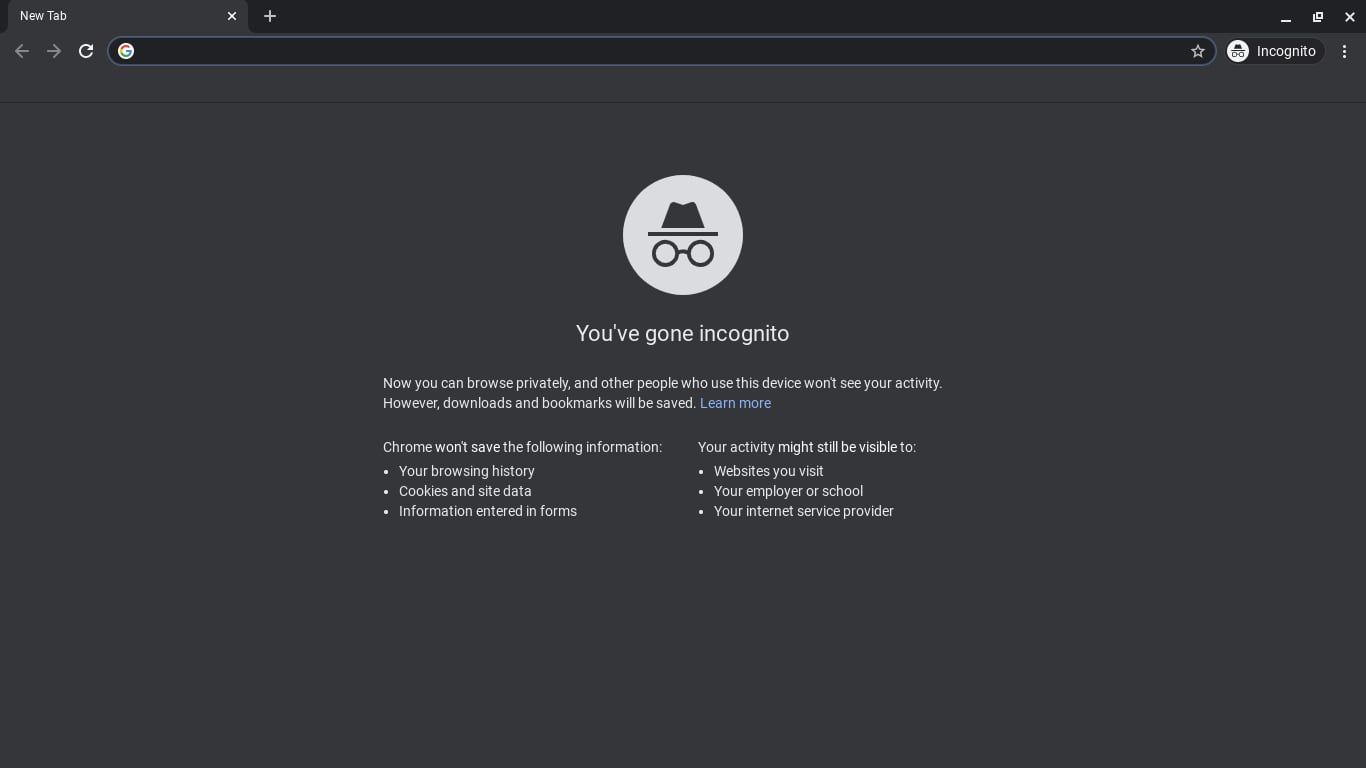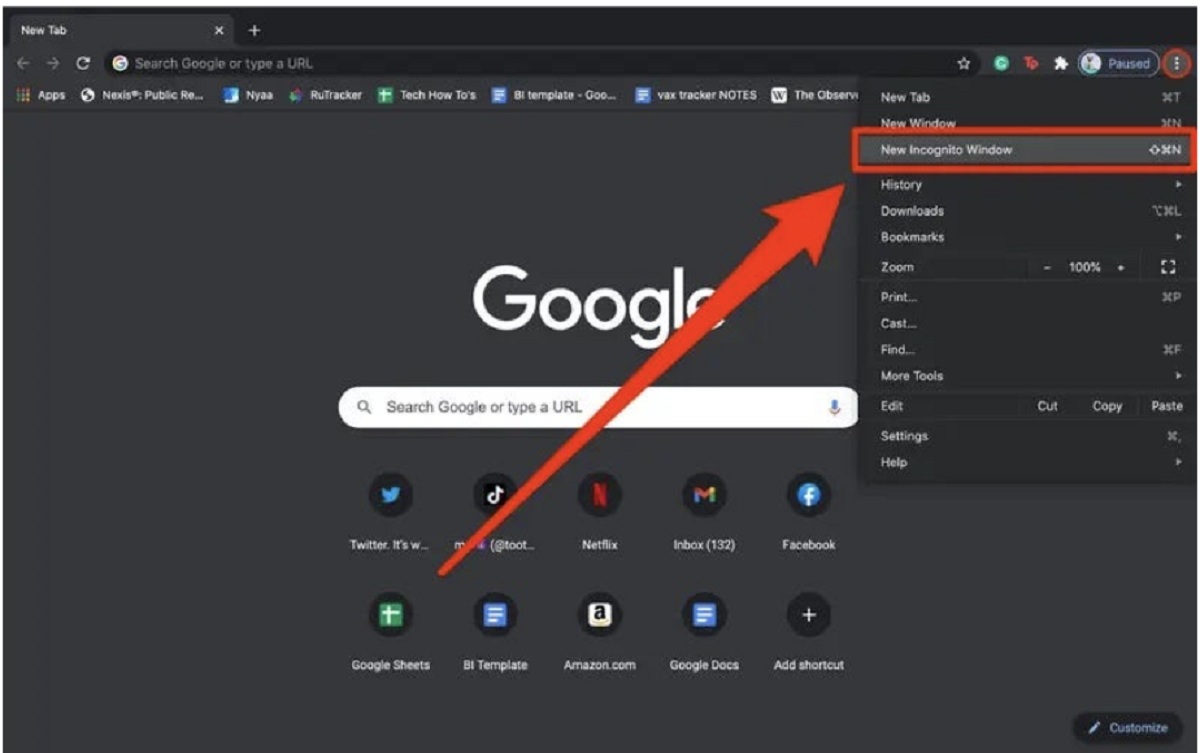Introduction
Welcome to the world of online browsing, where every click, search, and website visit leaves a trace of your digital footprint. In this era of advanced technology, maintaining our privacy and protecting our online activities has become a growing concern. This is where the concept of “Incognito Mode” comes into play.
Incognito mode, also known as private browsing or private mode, is a feature available in most modern web browsers that allows users to browse the internet without leaving behind any traces of their browsing history, cookies, or search queries. It provides a sense of privacy and anonymity by temporarily disabling the browser’s ability to save browsing data.
The allure of Incognito mode is undeniable. It promises a shield of privacy from prying eyes, whether it’s protecting your personal information from unwanted tracking or conducting confidential research without leaving a digital trail. But how exactly does Incognito mode work? And is it truly as private as it claims to be? In this article, we will explore the workings of Incognito mode, its advantages and limitations, and whether it is a reliable option for protecting your online privacy.
So, let’s dive into the world of Incognito mode and uncover the hidden truths behind this intriguing feature.
What is Incognito Mode?
Incognito mode, also referred to as private browsing or private mode, is a feature available in popular web browsers such as Google Chrome, Mozilla Firefox, and Safari. When enabled, it allows users to browse the internet without leaving traces of their online activities on their device. Unlike the regular browsing mode, which stores browsing history, cookies, and temporary files, Incognito mode creates a temporary session that is isolated from the main browser’s data.
When you open a new Incognito window or tab, the browser operates in a special mode that turns off features like browsing history recording, search suggestions, and the storage of cookies and site data. This means that the websites you visit, the searches you perform, and the information you enter will not be saved on your device. Additionally, any files you download or bookmarks you create during your Incognito session will be deleted once you close the window or tab.
It’s important to note that while your browsing activity is not stored on your device, your Internet Service Provider (ISP), employer, or the websites you visit may still be able to monitor your online activities. Incognito mode primarily focuses on preventing your browsing data from being saved locally on your device. It does not provide complete anonymity or protect you from external entities monitoring your internet traffic.
Furthermore, it’s worth mentioning that the appearance of the browser window changes when you activate Incognito mode. Typically, the browser will display a new tab or window with a visual indicator like a hat and glasses, or a message indicating that you are browsing privately.
Overall, Incognito mode offers a convenient way to browse the internet without leaving a trace on your own device. However, it is essential to understand its limitations and misconceptions before solely relying on it for privacy. In the next sections, we will explore how Incognito mode works and discuss its advantages and limitations in more detail.
How Does Incognito Mode Work?
When you enable Incognito mode in your web browser, it creates a separate browsing session that is isolated from your regular browsing activities. This separation ensures that your browsing data, including your history, cookies, and temporary files, are not saved on your device.
Here’s a step-by-step breakdown of how Incognito mode works:
- Disabling Browsing History Recording: One of the primary functions of Incognito mode is to prevent the browser from recording your browsing history. When you’re in Incognito mode, the browser does not save the URLs or pages you visit to your browsing history.
- Blocking Cookie Storage: Cookies are small text files that websites use to track user behavior, provide personalized experiences, and remember login credentials. In Incognito mode, the browser does not store cookies from the websites you visit, allowing you to browse without leaving behind any data related to your session.
- Disabling Search Suggestions: In regular browsing mode, the browser often suggests search queries or autocompletes your searches based on your previous browsing history. However, in Incognito mode, the browser does not provide these suggestions or utilize your previous search history.
- Managing Sign-In Sessions: If you’re signed in to an account on a particular website while in regular browsing mode, enabling Incognito mode will start a new session in which you are not signed in. This prevents your browsing activity from being associated with your account.
- Deleting Temporary Data: While you’re browsing in Incognito mode, temporary files such as images, scripts, and web page data are stored in memory and not written to your device’s storage. Once you close the Incognito window or tab, these temporary files are deleted, leaving no trace of your browsing activity.
It is important to note that while Incognito mode prevents the browser from storing data locally on your device, it does not provide anonymity or encrypt your internet traffic. Your ISP, employer, or any network administrators may still be able to monitor your online activities. If you want to enhance your privacy and protect your internet traffic from surveillance, consider using a Virtual Private Network (VPN) or other privacy-focused tools.
Now that we understand how Incognito mode works, let’s explore its advantages and limitations in the next sections.
Advantages of Incognito Mode
Incognito mode offers several advantages that make it a useful feature for certain browsing scenarios. While it may not provide complete online privacy, it does provide some level of protection and convenience. Here are some of the benefits of using Incognito mode:
- Browsing Privacy: One of the primary advantages of Incognito mode is the privacy it offers. By preventing the browser from storing your browsing history, cookies, and search queries, you can avoid leaving traces of your online activities on your device. This can be particularly useful if you’re using a shared computer or browsing on a public network where you don’t want your browsing data to be accessible to others.
- Multiple Account Management: Incognito mode allows you to manage multiple accounts on the same website without having to sign out and sign back in each time. Since Incognito mode starts a new browsing session separate from your regular session, you can log in to a different account on a website and access it simultaneously with your regular browsing session.
- Avoiding Personalization: Incognito mode can help you avoid personalized search suggestions and recommendations. By disabling the use of browsing history and cookies, the browser won’t tailor search results or display targeted ads based on your previous online activities. This can be useful if you want to conduct unbiased research or explore content without the influence of personalized recommendations.
- Bypassing Paywalls and Limited Access: Some websites use cookies or browsing history to restrict access to content or impose paywalls. By browsing in Incognito mode, you can bypass these limitations since the browser does not store the necessary information for the website to recognize that you’ve already accessed the content or exceeded your free article limit.
- Troubleshooting and Testing: Incognito mode can be helpful when troubleshooting browser-related issues or testing website functionality. Since it disables browser extensions and cached data, it allows you to isolate problems related to specific settings or browser configurations.
While these advantages make Incognito mode a useful tool in certain situations, it’s important to remember that it is not a foolproof method for online anonymity or complete privacy. It only addresses local privacy concerns and does not protect your online activities from external monitoring. Additionally, websites can still collect information about your visit, and your ISP or network administrator may still have visibility into your browsing history.
Now that we’ve explored the advantages of Incognito mode, let’s move on to discuss its limitations in the next section.
Limitations of Incognito Mode
While Incognito mode provides certain benefits in terms of browsing privacy and convenience, it is important to be aware of its limitations. Here are some of the key limitations of Incognito mode:
- Non-Private Network: Incognito mode does not encrypt your internet traffic or protect your online activities from being monitored by your Internet Service Provider (ISP), employer, or network administrators. Your browsing may still be visible to these entities, so if you require a higher level of privacy, consider using a Virtual Private Network (VPN) or other privacy-enhancing tools.
- Website Tracking: While Incognito mode prevents your browsing data from being stored locally, it does not stop websites from tracking your activities using various techniques. Websites may still collect information such as your IP address, browser version, and the websites you visit during your Incognito session. Incognito mode mainly focuses on preventing your local device from storing that information.
- Third-Party Tracking: Incognito mode does not block or prevent third-party trackers, such as advertising networks or social media widgets, from tracking your online activities. These trackers can still collect data about your browsing habits and interests, even if your browsing history is not saved on your device.
- Bookmarks and Downloads: Although Incognito mode does not save your browsing history or temporary files, it allows you to create bookmarks and download files during your private browsing session. These bookmarks and downloaded files can still be accessible after closing the Incognito window or tab. If you want to ensure complete privacy, make sure to clear your browsing data, including bookmarks and downloads, once you finish your Incognito session.
- Browser Extensions: Incognito mode disables most browser extensions by default, but some extensions may still be active and able to track your browsing activities. To ensure your privacy, review and disable any extensions that you don’t trust or that may compromise your anonymity while using Incognito mode.
It’s essential to have realistic expectations about the level of privacy Incognito mode provides. While it can help protect your local browsing data from being saved on your device, it does not offer complete anonymity or online privacy. Understanding these limitations will help you make informed decisions about when and how to use Incognito mode effectively.
Now that we’ve explored the limitations of Incognito mode, let’s address the question of whether Incognito mode is really as private as it claims to be in the next section.
Is Incognito Mode Really Private?
While Incognito mode provides some level of privacy and browsing anonymity, it is important to understand that it is not foolproof or completely private. Here are some factors to consider regarding the privacy of Incognito mode:
- Local Privacy: Incognito mode primarily focuses on maintaining privacy on your local device. It prevents your browsing history, cookies, and temporary files from being stored locally, which can help protect your privacy from other users who might have access to your device. However, it does not prevent your online activities from being monitored by your ISP, employers, or websites.
- Websites and Trackers: While Incognito mode prevents your browsing history from being saved on your device, websites can still collect data about your visit. They may log your IP address, track your interactions on their sites, and use various tracking technologies to gather information about your online activities. Additionally, third-party trackers can still collect data even in Incognito mode, potentially compromising your privacy.
- Network Monitoring: Incognito mode does not protect your internet traffic from being monitored by your ISP, employers, or network administrators. They can still see the websites you visit and the data you transmit, regardless of whether you are using Incognito mode or regular browsing mode. If you require heightened privacy, using a VPN or other privacy-enhancing tools is recommended.
- End-to-End Encryption: Incognito mode does not encrypt your internet traffic. This means that any data transmitted between your device and websites is still vulnerable to interception, especially when accessing websites without HTTPS encryption. If you desire secure and private communication, utilizing additional tools such as a VPN can provide end-to-end encryption.
It’s important to set realistic expectations regarding the privacy offered by Incognito mode. While it can help protect your local browsing data from being stored on your device, it does not provide complete privacy or anonymity. If you want to enhance your online privacy, consider combining Incognito mode with other privacy-related practices, such as using a VPN, regularly clearing your browsing data, and being mindful of the websites you visit and the information you share online.
Now that we’ve explored the privacy implications of Incognito mode, let’s discuss whether or not you should use Incognito mode in the next section.
Should You Use Incognito Mode?
The decision to use Incognito mode ultimately depends on your specific needs and concerns regarding online privacy. Here are some factors to consider when determining whether or not to use Incognito mode:
- Protection from Local Access: Incognito mode can be useful if you’re using a shared computer or browsing on a public network where you want to prevent others from accessing your browsing history or personal information stored in cookies. It provides a level of privacy from others who may have physical access to your device.
- Avoiding Personalization: Incognito mode can help you avoid personalized search results, recommendations, and targeted ads based on your previous browsing history. If you want to conduct unbiased research or explore content without the influence of personalized algorithms, using Incognito mode can be beneficial.
- Multiple Account Management: If you need to be logged in to multiple accounts on the same website simultaneously, Incognito mode can be helpful. Since it segregates your browsing session, you can stay logged in to different accounts without the need to sign out and sign back in each time.
- Bypassing Restrictions: Incognito mode can help bypass certain limitations imposed by websites, such as paywalls or access restrictions based on cookies or browsing history. By clearing the necessary data after each Incognito session, you can potentially access content or reset free article limits.
- Convenience and Efficiency: Utilizing Incognito mode can be convenient when troubleshooting browser-related issues or testing website functionality. It allows you to isolate problems related to extensions, cache, or cookies, providing a clean browsing environment for testing purposes.
However, it’s essential to keep in mind the limitations of Incognito mode. It does not provide complete online anonymity, secure encryption, or protection from network monitoring. If your primary concern is safeguarding your online activities from prying eyes, opting for additional privacy tools like a VPN is recommended.
Ultimately, the decision to use Incognito mode should be based on your individual circumstances and level of comfort with the privacy it offers. Understanding its advantages and limitations will help you make an informed choice about when and how to use Incognito mode effectively.
Finally, in the next section, I will provide some tips for using Incognito mode efficiently.
Tips for Using Incognito Mode Effectively
To make the most out of your Incognito mode browsing, consider the following tips:
- Understand the Limitations: Familiarize yourself with the limitations of Incognito mode. Remember that it primarily focuses on local privacy and does not protect your online activities from being tracked by websites, third-party trackers, or network monitoring.
- Combine with Other Privacy Measures: Consider using Incognito mode in conjunction with other privacy-focused tools, such as a Virtual Private Network (VPN). This helps enhance your privacy by encrypting your internet traffic and preventing others from monitoring your online activities.
- Clear Browsing Data Regularly: While Incognito mode prevents your local browsing data from being stored, remember to regularly clear your browsing data, including cookies and temporary files, from your browser even when not in Incognito mode. This ensures a clean browsing environment and minimizes the data available for tracking.
- Be Mindful of Third-Party Trackers: Keep in mind that Incognito mode does not block third-party trackers. Be cautious about the websites you visit and consider using browser extensions or add-ons that help block or manage these trackers.
- Use Strong and Unique Passwords: When browsing in Incognito mode, take the opportunity to create strong and unique passwords for the accounts you’re logging into. This adds an extra layer of security and helps protect your personal information.
- Be Aware of Encrypted Websites: Incognito mode does not provide secure encryption for your internet traffic. Pay attention to whether websites you visit have HTTPS encryption enabled, especially when entering sensitive information such as passwords or credit card details.
- Stay Updated: Keep your web browser and any additional privacy tools up to date. Regularly installing updates and security patches ensures you have the latest privacy features and protections.
By following these tips, you can use Incognito mode more effectively and take better control of your online privacy. However, always remember that no browsing mode is 100% foolproof, and it’s important to stay informed and educated about best practices for online privacy and security.
Now that we’ve explored tips for using Incognito mode efficiently, let’s conclude our discussion on Incognito mode.
Conclusion
In conclusion, Incognito mode offers a level of privacy and convenience for users who want to browse the internet without leaving traces of their online activities on their devices. It prevents the browser from storing browsing history, cookies, and temporary files, providing a sense of privacy from others who may have access to your device. However, it is important to recognize that Incognito mode has limitations and does not provide complete anonymity or protect your online activities from external monitoring.
While using Incognito mode, it is essential to understand that websites can still track your activities, and your Internet Service Provider (ISP), employers, or network administrators can still monitor your internet traffic. If you require stronger privacy, consider combining Incognito mode with tools like Virtual Private Networks (VPNs) to encrypt your traffic and prevent tracking.
Additionally, maintaining awareness of the limitations and taking additional privacy measures, such as regularly clearing browsing data and using strong and unique passwords, can enhance your privacy while using Incognito mode.
Ultimately, the decision to use Incognito mode depends on your specific needs and concerns regarding privacy. It can be useful for scenarios such as browsing on shared devices, avoiding personalized recommendations, managing multiple accounts simultaneously, and troubleshooting browser-related issues.
By understanding the capabilities and limitations of Incognito mode, along with incorporating additional privacy measures, you can make informed decisions when it comes to protecting your online activities and personal information.







